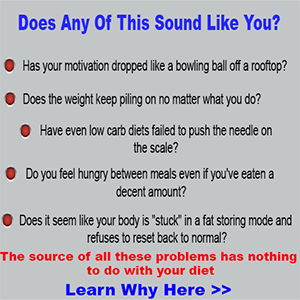Washboard Abs
One Secret To Getting Flat Chiseled Abs Again
Guys, we have a problem! A very BIG problem too! The minute we are born, we start the aging process. Flash forward a few years to the age of 12 or 13 when the changes started to happen. Your little voice got deeper and manlier. You started to grow hair in places you would never have even dreamed would grow hair. Your body started to change as well. You started to notice you were stronger, able to run faster, and your chest was taking shape.
Puberty is a time in a man’s life when there is a transition from boy to man. Testosterone production starts to increase, resulting in a deeper voice, a chiseled chest and arms and, yes, the extra body hair. For some, sports became easier to play and we started to notice the girls! For some reason they were more attractive.
The big problem I mentioned before is as we get older there is a gradual decline in testosterone. Research points to the age of 50 as the magic number when we notice a decline in energy, which might be a sign of declining testosterone levels. Declining testosterone affects us in many ways. A lack of motivation, decreased energy levels, a decrease in sex drive and sexual enjoyment, and a decrease in muscle strength and size can be typical reactions.
The decrease in muscle size and strength can be alarming to any man. I know I have done everything I can to get back to the chiseled, lean physique I once had in my twenties. What I have noticed is most men tend to gain weight around their bellies than anywhere else. Let me explain why.
What the heck is LPL?
A gradual decline in testosterone, results in our bodies being unable to process abdominal fat correctly. A hormone in the body called lipoprotein lipase (LPL) aids the breakdown of fat into usable nutrients for energy. The problem is this: When there is a decrease in testosterone, the hormone, LPL, increases in activity resulting in fat breakdown and storage in the cells of the body and not used for energy. Fat breakdown from lipoprotein lipase happens in two areas of the body: the abdominal region, specifically the adipose tissue, and in muscle.
Simply put, when LPL is increased, the body breaks down fat and stores it in the cells for use later. Results: higher stored triglycerides in the form of adipose tissue. When LPL is decreased, the opposite is true. The LPL in the muscle activates and breaks down more fat as opposed to blood sugar for energy. This is a good thing! The body is now using the stored energy from fat as a main energy source. The problem is this: some, if not most of us, have high LPL activity resulting in more fat storage.
Testosterone and Diabetes
This gets complicated with diabetes thrown into the mix. Diabetes, a metabolic disease characterized by the body either not producing enough insulin or the cells are not sensitive to insulin, rendering the body unable to remove sugar from the blood. When diabetes is controlled, people are able to process sugar and use it for energy due to increased insulin capabilities, or the cells are more sensitive to insulin secreted in the body. The drawback is when it is NOT under control.
Without proper control of insulin and blood sugar, our body utilizes the sugar in the blood and from food as energy and stores the rest in the cells. Where do you think we store it? You got it - whatever is not used for energy, we store as fat in the form of adipose tissue. There are three types of fat we need to discuss before we go any further.
The last is Brown Fat, or BAT. This is a great type of fat, and there is plenty of research praising benefits brown fat has on the body. The reason for the brown color is due to the abundance of mitochondria in the tissue. This fat utilizes adipose fat as fuel to produce heat, resulting in reduced weight and body fat stores. Great news for the fight against obesity!
Now the fat is out of the way, let’s turn our attention to how increasing testosterone can help you lose that stubborn belly fat. If you’re like me, you have done all the moves you could possibly do for the abs to help strengthen them, but it seems like nothing can get rid of stubborn belly fat.
Now don’t be afraid about having stubborn belly fat forever. This information should put your mind at ease. Increasing levels of testosterone might possibly decrease the activity of LPL - resulting in decreases in belly fat! This hormone, which decreases with age, can actually help to give us the lean and chiseled look. Research done by Rebuffee-Sevia et al. reinforces testosterone’s ability to fight belly fat.
Research done by Marin et al. also concluded increased testosterone levels resulted in a decrease of adipose triglycerides and a similar decrease in LPL activity. Interestingly enough, bad visceral fat decreased as well. They also found benefits including: a decrease in fat mass, fasting blood glucose levels, both fasting plasma cholesterol and triglycerides levels, and an increase in insulin activity related to sugar glucose control. The bottom line: increased testosterone results in metabolic and circulatory improvements. Want more?
Here is a great study for men suffering low testosterone who also have Diabetes. This research shows tremendous promise for men with diabetes AND low testosterone levels.
Research by Boyanor et al. concluded increased testosterone has positive effects at reducing visceral fat. Their research resulted in increased sensitivity to insulin and a similar decrease in LPL activity. This helped break down the fat into usable fuel for the body enabling its use at the muscular level, sparing glucose. Their subjects showed a decrease in body weight, waist-to-hip ratio, and overall body fat, especially adipose and visceral fat in the abdomen. Very important information in the possibility of testosterone in the management of Diabetes!
References:
Rebuffe-Sevia, M. Marin, P. Bjorntorp, P. Effect of testosterone on abdominal adipose tissue in men. Int. J. Obes. Novemeber 1991. Vol. 15(11);pp. 791-795.
About Jayson Hunter & Jaylab Pro

Jaylab Pro was founded by Registered Dietitian Jayson Hunter. Jayson has been recognized as one of America's foremost weight loss experts by America's Premier Experts™. He has also been featured in USA Today for this accomplishment. Jayson is also a best-selling author having co-authored multiple books in health & fitness and business growth. Jayson and the Jaylab Pro team are proud to create content that helps improve the lives of millions of people around the world. We hope you enjoy it just as much as others have.
 If you order a JayLabPro SmartShip product or any Combo Package, we will automatically ship you a new supply of the product or products you have ordered every month, starting 30 days after your initial order is shipped, and continuing until you cancel. The credit card you are using today will be billed the lowest available price for those product or products when your order is shipped, but shipping will be FREE. You may log into your customer account or call our customer service department toll-free at 1-888-9GETPRO (1-888-943-8776) between the hours of 8am – 9pm EST Mon-Fri to cancel future shipments, customize the timing of your shipments, or change the credit card used for billing.
If you order a JayLabPro SmartShip product or any Combo Package, we will automatically ship you a new supply of the product or products you have ordered every month, starting 30 days after your initial order is shipped, and continuing until you cancel. The credit card you are using today will be billed the lowest available price for those product or products when your order is shipped, but shipping will be FREE. You may log into your customer account or call our customer service department toll-free at 1-888-9GETPRO (1-888-943-8776) between the hours of 8am – 9pm EST Mon-Fri to cancel future shipments, customize the timing of your shipments, or change the credit card used for billing.









